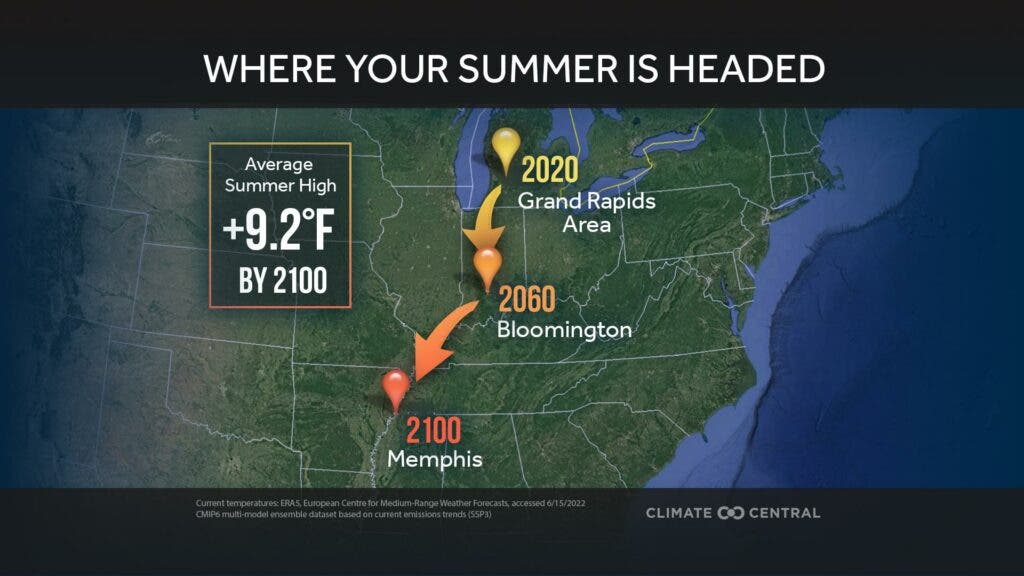Heatwaves have affected large parts of the US this summer, with almost a third of the population under a heat advisory and sweltering temperatures as high as 46C (115F). Hundreds of heat records were broken, from Portland, which reaches 38.9 (102F) to Boston, which hit 37C (100F). However, things are due to get much worse very soon — especially if we don’t reduce our greenhouse gas emissions fast.

If greenhouse gas emissions continue on the current trends, summertime in many cities across the US will start looking like the Middle East, a new study notes. Climate Central, a group of climate scientists and journalists, showed how warming could make summers feel entirely different in a list of 247 US cities.
“The real risks will be in heatwaves that are now occasional extremes that will start lasting longer,” Peter Girard, a spokesperson for Climate Central, told The Guardian. “These sorts of heatwaves will become normal and the dangers will be more present. There will be people who have never needed air conditioning who will face this.”
A warming trend
The study, named Shifting US Cities, projects average summer high temperatures at the end of the century and then compares them to cities experiencing those same temperatures today. It shows that average summer highs in almost 250 cities across the US could increase by over nine degrees Fahrenheit in less than 80 years.
The researchers collected temperature data from 1990 to 2020 to establish today’s baseline temperature and then looked at projections of temperatures this century under different climate scenarios. They chose to compare the status quo to a scenario where emissions aren’t reduced and the global average temperatures rise 3.6C by 2100.
According to the report, the six largest U.S. cities, with a combined population of 19 million, will see a rise of summer temperatures of at least 5F by 2100. For example, Phoenix would warm by 7.2F, with summers like Al Mubarraz, Saudi Arabia — while Chicago would warm by 9.1. comparable to the summers in Montgomery, Alabama.
Northern states are projected by Climate Central to face the most significant increases. Mitchell, South Dakota, for example, would have summers 11F hotter on average and feel similar to Wichita Falls, Texas. The average high in Mitchell in July was 91F. Under the expected warning, the average high in July 2100 would be about 102 degrees.
A group of sixteen US cities included in the analysis have no analogue in North America. Several cities in Texas are among those, such as Austin, El Paso and Houston. Farther west, cities in Arizona like Phoenix, Tucson and Tuma would have summer temperatures similar to the Middle East. This is also the case in Las Vegas and Palm Springs.
This analysis shows how drastic global warming would affect people and ecosystems. However, it represents the worst-case scenario, with little or no action to reduce greenhouse gas emissions by the end of the century. The IPCC, the leading group of climate scientists, has said humanity can still take action and prevent the worst consequences of climate change.









